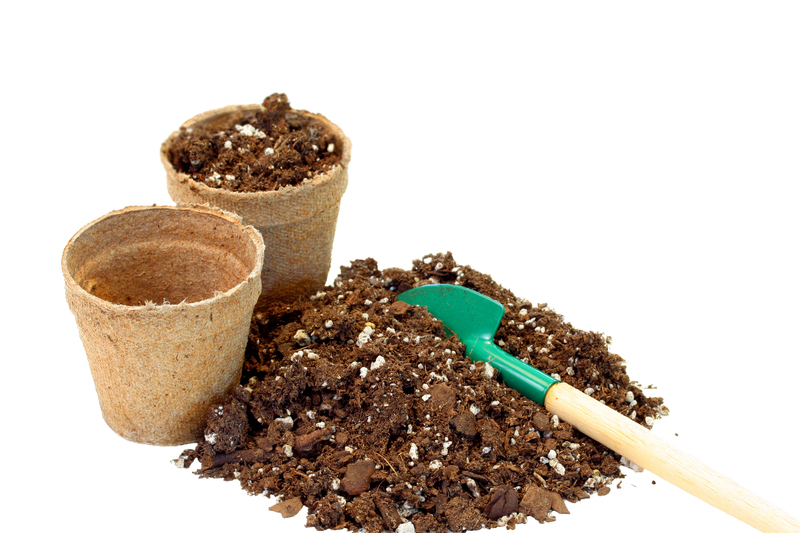Greener Gardens for a Cooler Planet
Posted on 20/06/2025
Greener Gardens for a Cooler Planet: Sustainable Gardening for a Better Tomorrow
Imagine a world where every backyard, balcony, and community plot thrives with life, filters the air, and helps stabilize our climate. 'Greener gardens for a cooler planet' isn't just a slogan--it's a movement reshaping how we think about our outdoor spaces and their potential to heal the Earth.
Why Greener Gardens Matter for the Planet
As the climate crisis accelerates, individuals seek ways to contribute to planetary health. Gardening, when approached with sustainability as a priority, can become a powerful weapon in the fight against global warming. Greener gardens absorb more carbon dioxide, support wildlife, regulate temperature, and reduce resource consumption, contributing to a cooler, healthier planet.
The Connection Between Gardens and Climate Change
Traditional gardens often require large amounts of water, chemical fertilizers, and fossil-fuel-based equipment, inadvertently increasing greenhouse emissions. In contrast, sustainable and greener gardening methods prioritize:
- Native and drought-resistant plants, which require less water and maintenance
- Soil management that stores more carbon
- Organic practices, reducing reliance on chemical inputs
- Landscaping for shade and biodiversity
By designing eco-friendly gardens, each of us can foster resilience and actively cool our local environment.

How Sustainable Gardens Contribute to Cooling
Shade and Temperature Regulation
The strategic use of trees, shrubs, and groundcovers offers significant cooling potential. Green spaces can be several degrees cooler than surrounding built environments, countering the urban heat island effect often seen in cities. Trees with dense canopies not only provide shade for humans and wildlife, but also:
- Block solar radiation from reaching hardscape surfaces
- Release water vapor through transpiration, further reducing temperatures
- Improve air quality by trapping dust and pollutants
Soil Carbon Sequestration
Healthy, living soil plays a massive role in capturing carbon. By using methods such as composting, mulching, and minimal tillage, greener gardens lock more organic carbon in the ground rather than letting it escape into the atmosphere.
Water Efficiency and Cooling
Smart irrigation, rain gardens, and appropriate plant selection reduce water waste and enhance cooling. Water-wise gardening not only conserves this precious resource but also promotes lush, temperature-regulating plant growth.
Designing Greener Gardens for the Future
1. Prioritize Native and Climate-Resilient Plants
Choosing native species ensures that plants are well-adapted to local climates and naturally resistant to local pests. These plants need less water and fertilizer, supporting a healthier ecosystem. Consider:
- Pollinator-friendly flowers
- Drought-resistant groundcovers
- Tough perennial grasses
- Deciduous shade trees
2. Build Healthy Soils
Soil is the foundation of every garden and a key player in the carbon cycle. To foster rich, living soils:
- Add organic matter with compost and mulch
- Minimize digging to preserve soil structure and organisms
- Use cover crops to prevent erosion and feed soil microbes
3. Conserve Water with Smart Solutions
With water becoming an ever-scarcer resource, greener garden strategies are essential:
- Install rain barrels and direct downspouts into rain gardens
- Use drip irrigation systems instead of sprinklers for efficient watering
- Mulch surfaces to retain moisture and suppress weeds
- Group plants by water needs to minimize waste
4. Go Organic for Healthier Ecosystems
Ditching chemical pesticides and fertilizers decreases emissions and protects pollinators, birds, and beneficial insects. Organic gardening principles include:
- Creating compost from kitchen and garden waste
- Handpicking pests or using natural predators
- Rotating crops and diversifying plantings
5. Choose Sustainable Materials and Tools
Whenever possible, opt for:
- Locally sourced mulch, stone, and lumber
- Hand-powered or electric tools instead of gas-powered
- Recycled or upcycled containers and furnishings
6. Support Biodiversity in Your Backyard
Diverse gardens not only look beautiful but also harbor resilient mini-ecosystems that are better equipped to withstand pests and climate shocks. Key actions include:
- Planting a mix of trees, shrubs, annuals, and perennials
- Adding birdhouses, bee hotels, and ponds for wildlife
- Avoiding monocultures which are prone to pests and disease
Eco-Friendly Landscaping Innovations
Edible Gardens and Urban Farming
Growing your own food in gardens, containers, or rooftop plots reduces the carbon footprint associated with transporting produce. Urban farming initiatives can turn city spaces into productive oases, providing fresher food and cooler neighborhoods.
Green Roofs and Vertical Gardens
For those with limited ground space, green roofs and living walls offer powerful solutions. These installations:
- Insulate buildings, reducing energy use for cooling
- Absorb rainwater and filter pollutants
- Support pollinators and urban biodiversity
Xeriscaping and Drought-Tolerant Design
Xeriscaping uses minimal water while creating lush, attractive gardens. It emphasizes:
- Gravel, rocks, and permeable paths
- Heat- and drought-resistant plants
- Efficient mulching and groundcovers
Community Gardens: Collective Impact on Climate
Community and public gardens are emerging as critical assets in the battle against rising temperatures. Managed collectively, these gardens:
- Boost food security
- Cool neighborhoods through aggregated green space
- Educate and inspire sustainable practices
- Offer wildlife corridors within urban areas
Greener Schoolyards
School gardens teach children the biology of plants, nutrition, and climate science. They also cool hardscapes, cut utility costs, and support local pollinators--all while instilling lifelong environmental values.
Benefits of Greener Gardens Beyond Climate Cooling
Health and Wellbeing
Access to lush, green spaces dramatically improves mental health, reduces stress, and fosters physical activity. During heatwaves, shaded gardens provide refuge and protect at-risk populations.
Economic Advantages
Sustainable gardens lower energy bills, reduce the need for expensive chemicals and water, and boost property values.
Rich Biodiversity
Ecologically diverse gardens support food webs, from tiny bees to birds and mammals, building an environment where life thrives at every level.
Greener Gardening: Getting Started Tips
Begin with Small Changes
- Swap thirsty lawns for wildflower meadows or native grasses
- Add a tree or two for instant cooling
- Start composting your kitchen scraps
- Trade synthetic fertilizers for organic mulch
Expand Your Knowledge
- Join local gardening groups and sustainability workshops
- Read up on your region's native species and climate risks
- Volunteer at community gardens for hands-on learning
Monitor and Adapt
- Check soil moisture before watering
- Observe which plants thrive and pivot accordingly
- Use eco-friendly pest management techniques

Greener Gardens, Cooler Planet: Your Role in the Climate Solution
Every plot, patio, or rooftop is an opportunity to help the planet. By reimagining our gardens as frontline climate solutions, we bridge the gap between nature and urban life. Remember, even the smallest greener garden has a cooling impact, supports local wildlife, and ripples out positive effects.
Share Your Green Journey
Inspire neighbors, friends, and family by showcasing your eco-friendly gardening efforts. Share photos, swap seeds, and advocate for greener landscaping in public spaces. The more we work together, the greener--and cooler--our communities and our planet will be.
Resources for a Greener Garden and a Cooler World
- Local Cooperative Extensions: Advice on native plants and sustainability programs
- International Society of Arboriculture: Resources on tree planting and care
- Community Supported Agriculture (CSA): Support local food and green practices
- Online Gardening Forums and Social Media Groups for tips and inspiration
Let your garden be a force for cool change: embrace greener gardening practices and join the global effort to restore the climate--one plant, one patch, one planet at a time.

